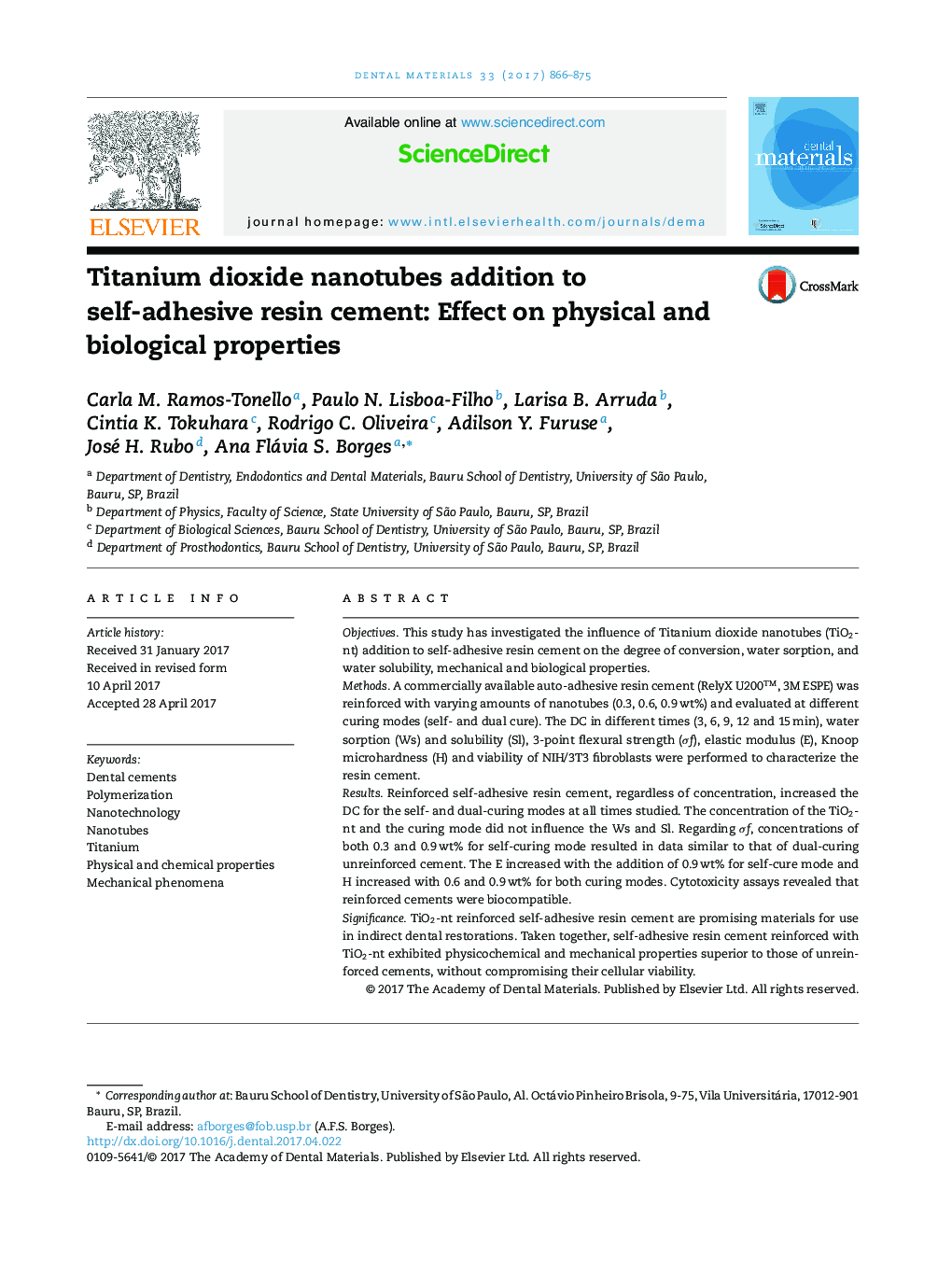| Article ID | Journal | Published Year | Pages | File Type |
|---|---|---|---|---|
| 5432942 | Dental Materials | 2017 | 10 Pages |
â¢The presence of monomers with acidic groups in self-adhesive resin cements allows a simplified indirect luting technique.â¢âThe same acidic monomers may adversely affect their properties where the passage of light is inefficient or absent.â¢The incorporation of nanostructures into dental polymers has shown promising results.
ObjectivesThis study has investigated the influence of Titanium dioxide nanotubes (TiO2-nt) addition to self-adhesive resin cement on the degree of conversion, water sorption, and water solubility, mechanical and biological properties.MethodsA commercially available auto-adhesive resin cement (RelyX U200â¢, 3M ESPE) was reinforced with varying amounts of nanotubes (0.3, 0.6, 0.9 wt%) and evaluated at different curing modes (self- and dual cure). The DC in different times (3, 6, 9, 12 and 15 min), water sorption (Ws) and solubility (Sl), 3-point flexural strength (Ïf), elastic modulus (E), Knoop microhardness (H) and viability of NIH/3T3 fibroblasts were performed to characterize the resin cement.ResultsReinforced self-adhesive resin cement, regardless of concentration, increased the DC for the self- and dual-curing modes at all times studied. The concentration of the TiO2-nt and the curing mode did not influence the Ws and Sl. Regarding Ïf, concentrations of both 0.3 and 0.9 wt% for self-curing mode resulted in data similar to that of dual-curing unreinforced cement. The E increased with the addition of 0.9 wt% for self-cure mode and H increased with 0.6 and 0.9 wt% for both curing modes. Cytotoxicity assays revealed that reinforced cements were biocompatible.SignificanceTiO2-nt reinforced self-adhesive resin cement are promising materials for use in indirect dental restorations. Taken together, self-adhesive resin cement reinforced with TiO2-nt exhibited physicochemical and mechanical properties superior to those of unreinforced cements, without compromising their cellular viability.
